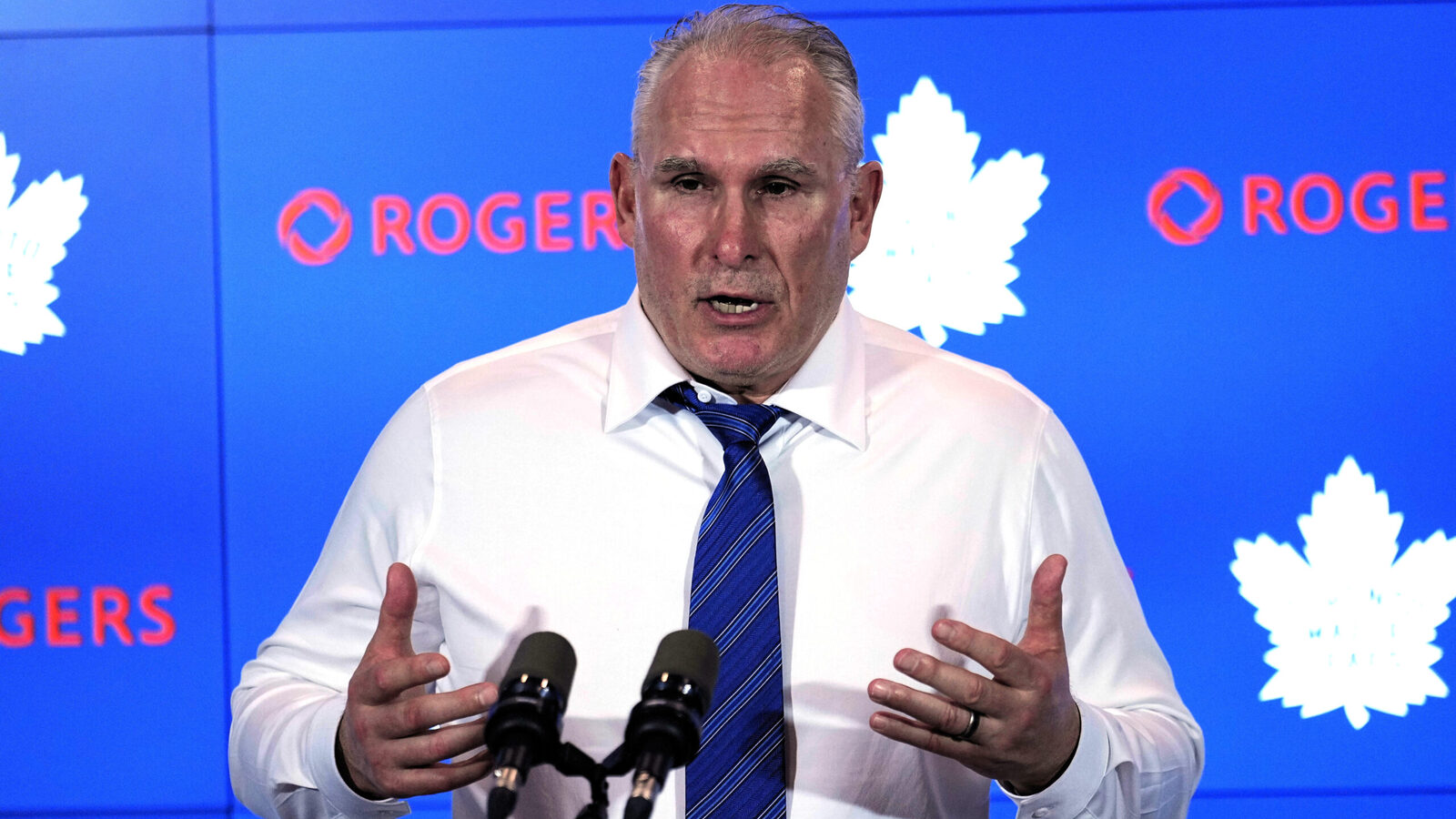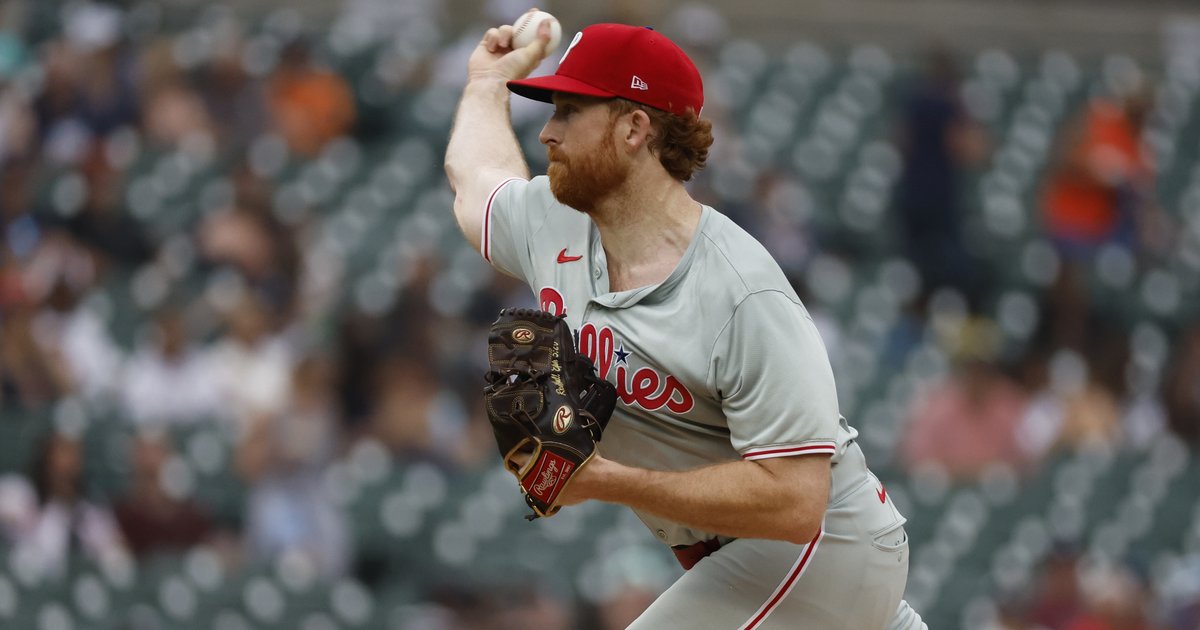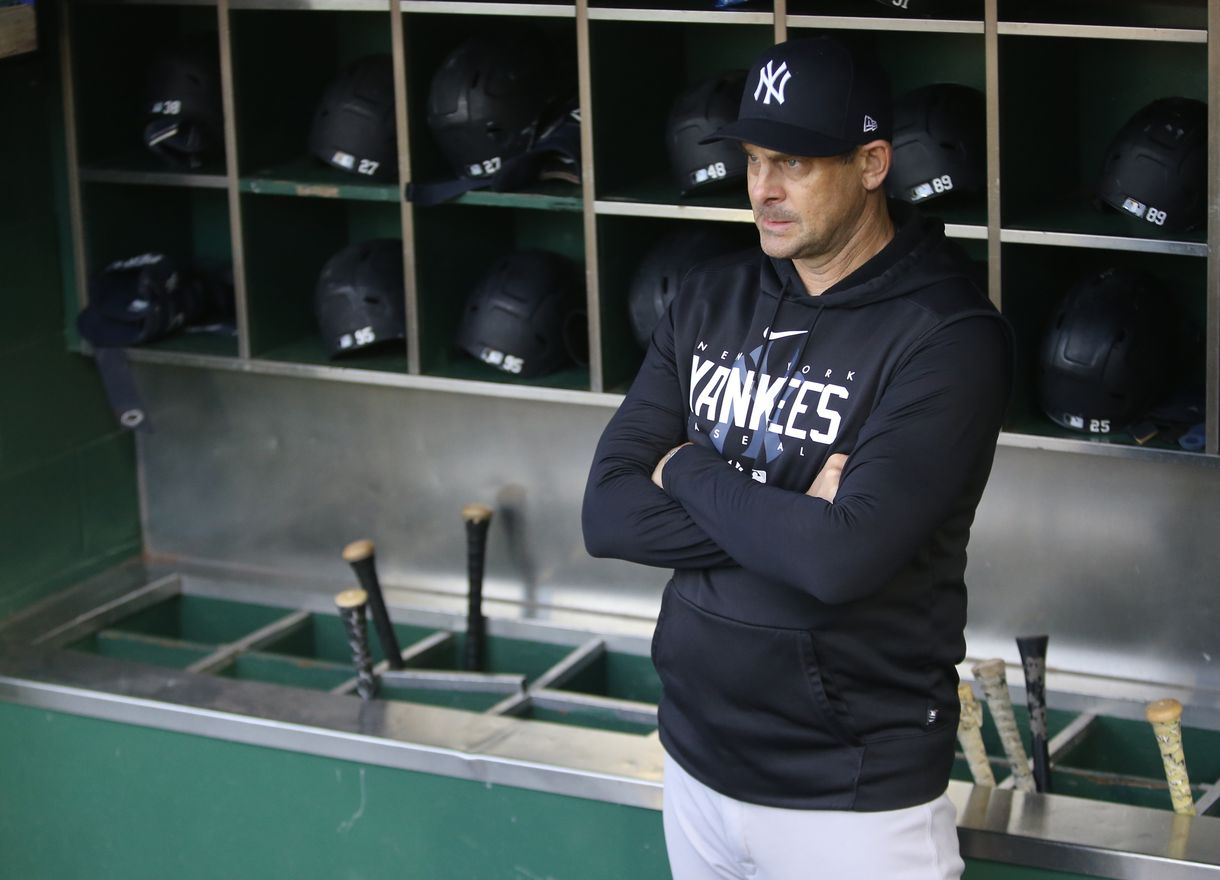
If the regular season is ultimately an 82-game experiment for the playoffs, Toronto Maple Leafs head coach Craig Berube may be forced to finish his hypothesis testing ahead of schedule.
Toronto has weathered injuries admirably throughout the season, which may have been its defining quality during the first half of the year. As the season comes to a close, Jake McCabe, Oliver Ekman-Larsson and David Kampf are all ruled out of Saturday’s marquee against the Montreal Canadiens, while Max Pacioretty watches from the outside looking in, waiting for a chance to re-enter the lineup. Toronto will play with five defencemen on Saturday, and while it shouldn’t provide much predictive value for the playoffs as a result, it should accelerate Berube’s timeline when solidifying his combinations for Game 1 of the playoffs.
Matthew Knies, Auston Matthews and Mitch Marner aren’t going anywhere. Berube cemented his first line from the outset and hasn’t been comfortable with the idea of separating Matthews from Marner for extended periods, when the Maple Leafs’ captain has been healthy. Knies-Matthews-Marner have played 544:10 together at 5-on-5, which is far and away the most-used Maple Leafs forward combination this season, and they’ve delivered a plus-10 goal differential (33-23) with a 49.2 percent share of the expected goals via Natural Stat Trick. These are solid results, although many critics would argue that it’s still not good enough for a first line that ought to be dominant in all facets, and pales in comparison to Tampa’s top scoring unit of Jake Guentzel, Brayden Point and Nikita Kucherov. In any event, this line isn’t going anywhere and can be locked in for Game 1.
From there onwards, it’s a bit trickier. Bobby McMann, Max Domi and Nick Robertson are the Maple Leafs’ second-most unit, playing 201:34 together at 5-on-5, with a plus-three goal differential (10-7) and a 43.9 percent share of the expected goals. Toronto will be running back this unit against Montreal on Saturday and it’s been Berube’s most consistent third line this season. McMann has often been used on the second line with John Tavares and William Nylander, which is Toronto’s optimal second line, outscoring opponents 11-4 in 138:27 together at 5-on-5, but Berube is holding auditions for the second-line left wing role, where Calle Jarnkrok is currently playing.
Jarnkrok isn’t playing at a level that necessitates top-six minutes, and while McMann is the best candidate to play alongside Tavares and Nylander, Berube may go back to Pacioretty, if he’s healthy for the playoffs. Pacioretty has played extensive minutes with Tavares and Nylander with a plus-three goal differential and a 48.5 percent share of the expected goals in 172:37 shared ice time together, so there’s some proof of concept, and with little time to experiment further, Berube may have his top-nine locked in.
Kampf may be Berube’s idealized fourth-line centre, especially given that he has some value on the penalty kill, but given that trade deadline acquisition Scott Laughton hasn’t played well enough in a third-line role, it’s created an open competition for the final spots. Laughton appears to be on the fourth line, unless Berube bumps McMann back up to the second line, where Laughton can centre the third line, Domi moves back to the wing where he’s much better suited, and one of Nick Robertson and Pontus Holmberg can fight for the right wing role. Robertson is the superior player and scorer to be sure, and has earned the role over Holmberg. Holmberg’s value essentially lies in drawing penalties and getting the Maple Leafs’ superior power play back on the ice, drawing a team-best 27 penalties in all situations this season.
As for the maligned blue line? Morgan Rielly will be stapled to Brandon Carlo, who has provided the Maple Leafs with some stability and toughness since joining the team at the deadline. It’s been a tough season for Rielly but Carlo is lessening his workload and while this pairing is ideally suited as a true second unit, they will have to log top-pair minutes with McCabe out of the lineup and build further continuity during these final four games. McCabe and Ekman-Larsson’s absence also provide Simon Benoit with a chance to further solidify his spot in the lineup. Benoit has also struggled badly throughout the season, but he’s shown a decent uptick in form with stellar performances against both the Panthers and Lightning this week, and can show why he’s a better option than Philippe Myers, who is prone to more variance. When McCabe returns to the lineup, he can rejoin Chris Tanev to form Toronto’s true shutdown pairing, and balance will be restored.
Anthony Stolarz appears to be the playoff starter and it seems unlikely Joseph Woll will convince Berube otherwise during the final four games of the year, but the Maple Leafs’ goaltending is an advantage, for perhaps the first time during the Matthews-Marner era. Although Berube seems hesitant to run a tandem during the postseason, Woll has proven capable of a No. 1 workload this season, and can further endear himself to the coaching staff by closing out the season on a high note.
Berube would be forced to make permanent decisions on his playoff lineup inevitably, but the recent wave of injuries perhaps speeds up his process, even if he’s been reticent to fully play his hand before the postseason begins. Sheldon Keefe’s ultimate failure stemmed from his inability to make quick in-game changes when the situation called for it, and Berube has built large enough samples throughout the year to lend proof that some of his key combinations ought to work when time and space shrink this spring. Don’t look too much into the five-defenceman format on Saturday, but it should be an indicator that Berube ought to be finalizing his combinations for Game 1.

